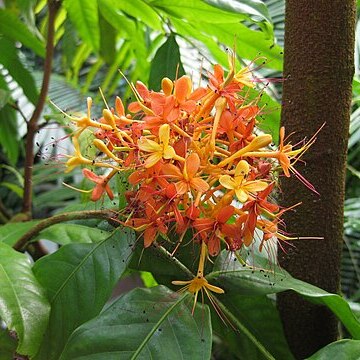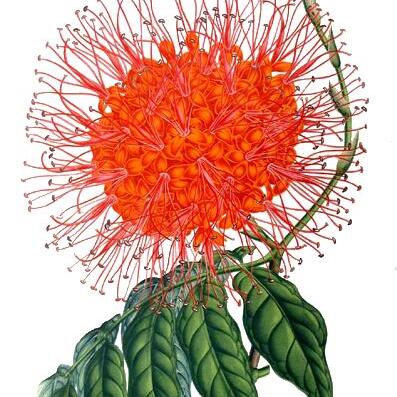Shrubs or trees. Stipules axillary, enveloping the bud, usually caducous. Leaves spiral, paripinnate, 1-7-jugate, petioled. Leaflets opposite, sometimes with a pair of wartlike glands at the base and/or at the apex; nerves more or less straight or slightly curved and obliquely upward towards the margin, usually elevated and distinct beneath, less so above; veins reticulate, often visible or distinct beneath, rather obscure above; petiolules very short. Inflorescences terminal or axillary, or on older branches, often rather dense, corymbose or paniculate, usually many-flowered; bracts caducous or persistent; bracteoles (sub)opposite, often coloured and showy; pedicels very short. Flowers bisexual, or functionally male (with short, small, sterile or rudimentary pistil), distinctly (or sometimes not) articulated at the base. Hypanthium cylindrical or tubular. Calyx 4(-6)-lobed, subequal, petaloid. Petals absent. Disk absent. Stamens (3 or) 4-8(-10) fertile, in one whorl; filaments free or united at the base into a thin rim or ring-like, more or less equal in length, exserted; anthers ellipsoid, oblong, or broadly ovoid, dorsifixed, introrse, often shortly hairy at apex and/or base, rarely also on the back, or glabrous; staminodes dentate or rarely subulate when present. Pistil stipitate, excentric with stipe adnate to the hypanthium; ovary oblong or lanceolate, 2-(in S. hullettii) or (4-)6-8(-12)-ovuled; style filiform; stigma terminal, minute, obtuse. Pods suborbicular, broadly ovoid, ellipsoid, or obovoid, flattened, straight or distinctly curved, coriaceous or woody, dehiscent, 2-valved, valves twisting and enrolling during dehiscence, 1-8-seeded. Seeds ovoid, ellipsoid, or subglobose, smooth, compressed or subterete, exarillate, exalbumi-nous.
More
Trees. Leaves abruptly pinnate, with few pairs of leaflets, leathery; stipules 2, usually united to a conical sheath, caducous; petiole robust, with glandular nodes. Corymbose panicles axillary or terminal; involucre caducous; bract 1, deciduous or persistent, smaller or larger than bracteoles, hairy or glabrous; bracteoles 2, usually persistent, subopposite, colored. Flowers bisexual or unisexual, yellowish to deep red, with short pedicels. Calyx tubular; tube elongated, slightly inflated in upper part, with a disk at apex; lobes 4, rarely 5 or 6, petaloid, ovate-oblong, slightly unequal in size, imbricate. Petals absent. Stamens 4-10, all perfect or 1 or 2 reduced, inserted in disk on throat of calyx tube; filaments free, elongated, often reflexed in bud; anthers oblong or suborbicular, dorsifixed, cells opening lengthwise. Ovary compressed, oblong, hairy or glabrous, shortly stalked, stalk adnate to calyx tube; ovules few to more than 10; style filiform; stigma terminal, capitate. Legume compressed, oblong, slightly curved and oblique, leathery to rather woody, 2-valved. Seeds 1-8, compressed, elliptic to ovoid; testa thin, crustaceous; radicle small, straight.


